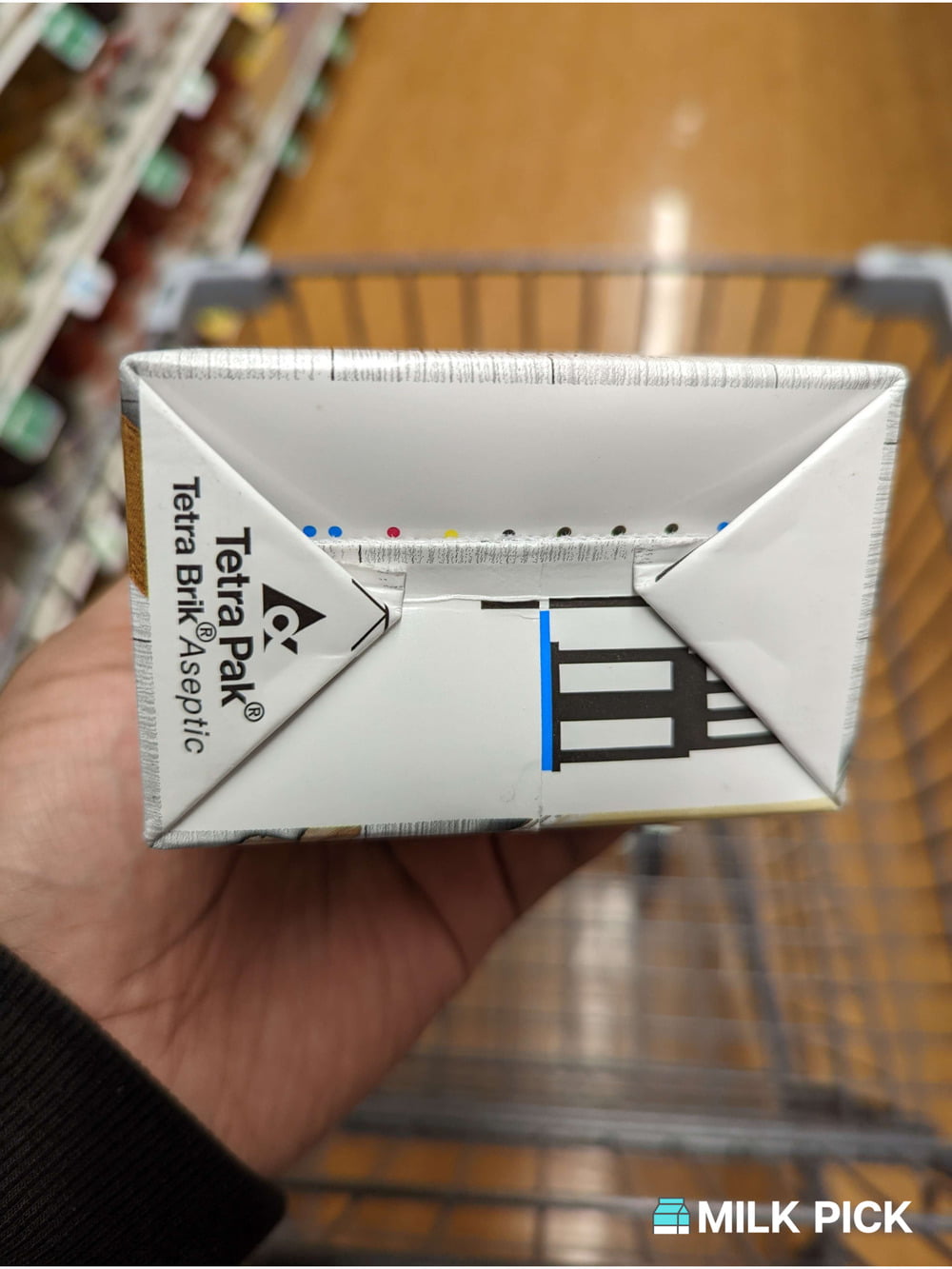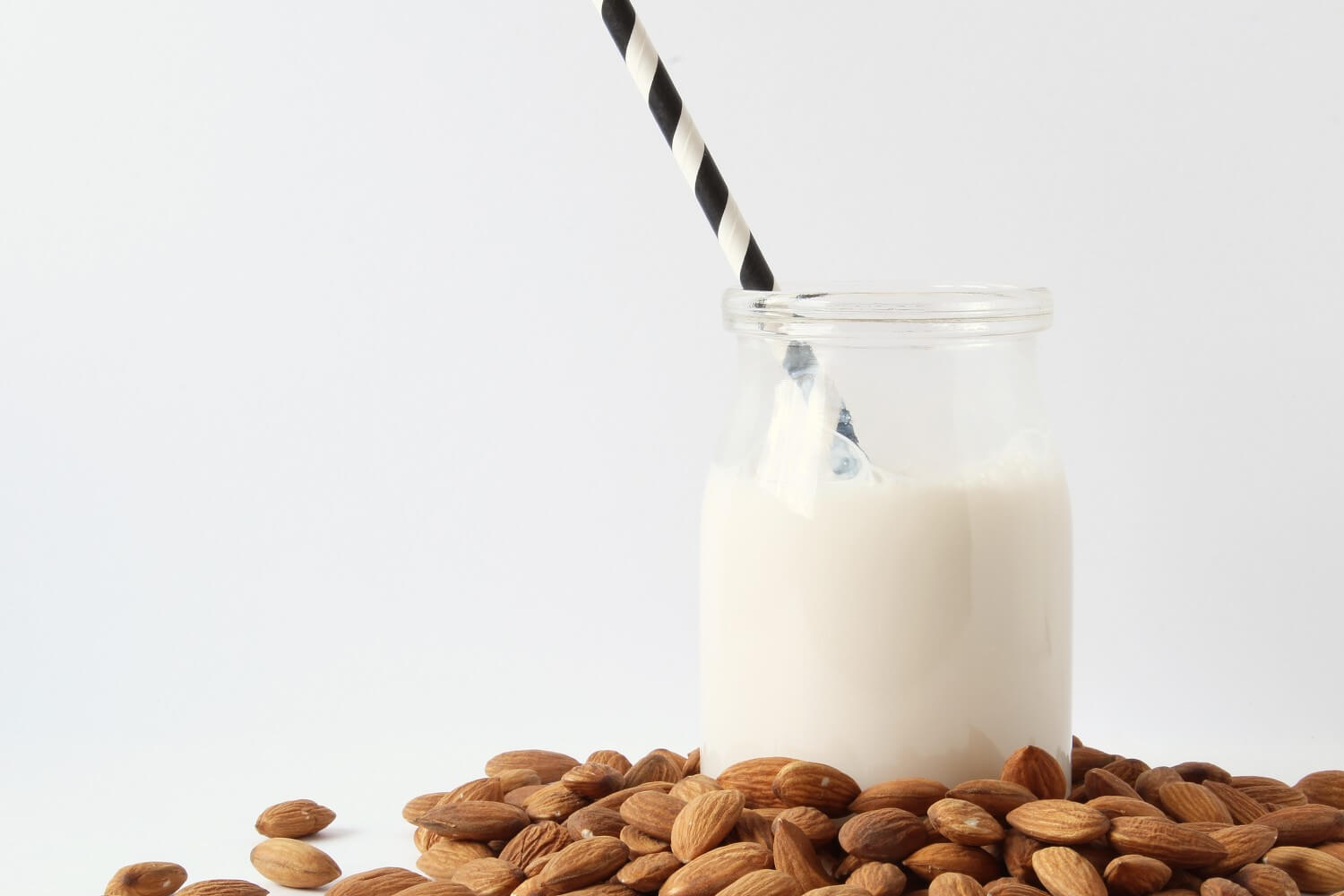People who can’t drink dairy milk have to turn to alternative options like nut-based milk for recipes and beverages.
Among the top alternative milk choices is almond milk.
But is almond milk good for lactose intolerance?
Almond milk is the perfect milk substitute for people who can’t drink dairy milk due to lactose intolerance.
Learn more about lactose intolerance and why almond milk makes an ideal substitute for people with the condition.
Is Almond Milk Good For Lactose Intolerance?
For those with lactose intolerance, drinking milk is an uncomfortable experience.
If you have the condition, almond milk can provide a tasty, healthy alternative to cow milk.
Almond milk is made from almonds and water, so it doesn’t contain the same sugars as dairy.
Almond milk is naturally lactose-free, making it the perfect beverage for people with lactose intolerance.
The liquid works well as a creamer for coffees and teas and as a milk substitute in recipes for baked goods and sauces.
Almond milk generally comes in three forms: homemade, store-bought, and shelf-stable.
Related: Is There Milk in Boba Tea?
Homemade Almond Milk
You can make homemade almond milk with a blender, almonds, and water.
Simply soak your whole almonds overnight and remove their skins in the morning.
Combine about one cup of almonds with one cup of water and blend in a high-powered blender.
You can add a dash of sweeteners, such as maple syrup or stevia, and a touch of vanilla for a tasty lactose-free drink.
Here's a video from The Cooking Foodie that shows you how to make almond milk from scratch.
Store-Bought Almond Milk
Store-bought almond milk typically refers to ready-to-drink almond milk found in the refrigerated section at the grocery store.
Store-bought almond milk comes in various flavors, like chocolate and vanilla.
You can also get it unsweetened or sweetened, depending on your preference.
This almond milk is also an excellent alternative to dairy milk and does not contain lactose.
However, when choosing store-bought almond milk, opt for a brand with fewer additives for better health benefits.
Some good options include:
Shelf-Stable Almond Milk
Shelf-stable is unrefrigerated almond milk hermetically sealed in a Tetra-Pak container.

This container keeps the almond milk fresh for up to one year unopened and 7-10 days in the refrigerator after opening.
This type of almond milk is also perfect for those looking for a dairy milk alternative, as it doesn’t contain lactose.
Because it stays safe to drink for so long at room temperature, shelf-stable almond milk is a good choice if you like to buy your beverages in bulk and store them in the cabinet.
Benefits Of Almond Milk For People With Lactose Intolerance
Almond milk offers several benefits to people who live with lactose intolerance.
It allows them a creamy, delicious alternative to use in recipes and as a creamer, and it also provides several health benefits.
These include:
- Lower in calories than dairy milk which can help in weight loss
- Lower in carbohydrates which is perfect for people with diabetes or those on keto
- Certain brands are cleaner than dairy milk and work for diets like Whole30
- Almond milk is a good source of vitamin D and Calcium, especially in fortified brands
In addition to these general benefits, almond milk prevents those with lactose intolerance from feeling bloated, gassy, and uncomfortable by working as a milk alternative in homemade and store-bought ice creams, coffees, creamers, and other treats.

What’s The Best Alternative Milk For Lactose Intolerance?
There is no one best alternative milk for lactose intolerance.
Almond milk is likely the most popular choice, as it is the world’s leading type of alternative milk by sales.
However, if you are lactose intolerant and don’t like the taste of almond milk or have a nut allergy, you might opt for an almond milk alternative such as:
Oat Milk
Oat milk is the second most popular dairy alternative after almond milk.
It offers a non-nut-based beverage for those who can’t have dairy due to lactose intolerance or almond milk due to tree nut allergies.
Oat milk contains several beneficial nutrients, the most notable being a high amount of fiber which can help with digestion and blood sugar regulation.
It is creamier than almond milk and doesn’t contain lactose, but it does have a high carbohydrate count, making it unsuitable for those on Keto or who have diabetes.
Check out our Oat Milk 101 video for more info on oat milk!
Soy Milk
Soy milk is made from soybeans and is one of the most sustainable alternative milk options.
It is lactose-free and has a nutritional profile similar to cow milk, though lower in calcium unless it’s fortified.
Soy milk is creamy and comes in a variety of flavors and consistencies.
If you’re looking for a non-dairy alternative, soy milk is a long-standing and safe option for those with nut allergies.
You might also try lactose-free dairy milk, which is processed to remove lactose from the milk, or take lactase tablets before drinking or eating dairy foods.
Check out our Soy Milk 101 video to learn more!
What is Lactose Intolerance?
Lactose intolerance is a condition that affects 68% of the world’s population.
People with lactose intolerance also called lactose malabsorption, can’t digest the lactose, a form of sugar, in dairy milk properly.
If people with lactose intolerance eat or drink dairy products, like milk, ice cream, or cheese, they typically experience uncomfortable symptoms such as:
- Bloating
- Gas
- Diarrhea
- Stomach cramps
- Nausea or vomiting
These symptoms typically begin about thirty minutes to two hours after consuming dairy products.
Depending on the amount of dairy consumed and your system, symptoms can last anywhere from a few hours to two days as your body digests and removes the lactose.
Who is at Risk for Lactose Intolerance?
Approximately 30 to 50 million people have lactose intolerance in the U.S.
People of African, Asian, Hispanic, and Native descent have higher rates of lactose intolerance than those of European ancestry.
Other factors may affect the likelihood of developing lactose intolerance, including:
- Being born prematurely
- Aging
- Having a condition like celiac disease or Crohn’s disease
- Intestinal complications from cancer treatments
What Causes Lactose Intolerance?
Lactose malabsorption happens when your body produces too little lactase, an enzyme it needs to break down the natural sugar in dairy foods.
To digest dairy milk, your body must break down lactose into two more simple sugars: galactose and glucose.
This process allows your body to absorb the sugars through your intestines into your bloodstream.
People who are lactose intolerant don’t have enough lactase, which means that the lactose from dairy goes straight to their colon rather than being absorbed.
This is an issue because the bacteria in the colon aren’t meant to interact with undigested lactose. This interaction causes bloating, gas, and other symptoms of lactose malabsorption.
People experience primary lactose intolerance when their body's lactase naturally drops off as they age.
They may also have secondary lactose intolerance caused by other conditions, illness, or surgery.
In rare cases, infants may be born with congenital lactose intolerance.
Check out this video from the Osmosis YouTube channel for more info on the causes and symptoms of lactose intolerance.
What Foods Should People With Lactose Intolerance Avoid?
If you have lactose malabsorption, you should avoid products with lactose, which is most dairy products.
These items include:
- Milk
- Yogurt
- Soft cheese
- Milk chocolate
- Ice cream
- Butter
Cow’s milk is one of the top foods to avoid for those with lactose intolerance.
One cup of whole milk contains 13 grams of lactose, and skim milk contains between 12 and 13 grams.
The higher the amount of lactose, the worse your symptoms will manifest, so it's crucial to avoid drinking regular cow milk if you have the condition.
What Happens if You Drink Milk With Lactose Intolerance?
The severity of your lactose intolerance symptoms will vary based on your body’s ability to move the sugar through your body.
If you have lactose intolerance and drink a full cup of dairy milk, you will likely start to feel the effects of the lactose within one-half hour to two hours after ingestion.
You may have abdominal pain, diarrhea, bloating, nausea, gas, and a feeling of fullness.
However, additional symptoms have been reported by those with lactose intolerance, such as:
- Muscle pain
- Headache
- Joint pain
- Urinary symptoms
- Mouth ulcers
- Loss of concentration
Despite these uncomfortable symptoms, lactose intolerance is not deadly. It differs from a milk allergy, which can cause anaphylaxis or death.
Almond Milk: An Excellent Choice To Manage Lactose Intolerance
Lactose intolerance is a non-life-threatening condition that can interfere with your ability to eat the foods you want.
Thankfully, almond milk offers a suitable alternative to dairy milk for those with lactose malabsorption.
Almond milk has several health benefits, and best of all, it doesn't contain lactose, so it’s ideal for those looking for an alternative to lactose-heavy cow milk.
If you have lactose intolerance, feel free to drink as much almond milk as you like or use it to make your favorite savory and sweet recipes without worrying about developing the bothersome symptom so lactose intolerance.
